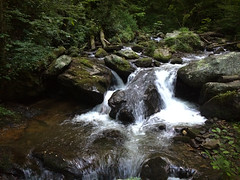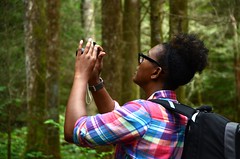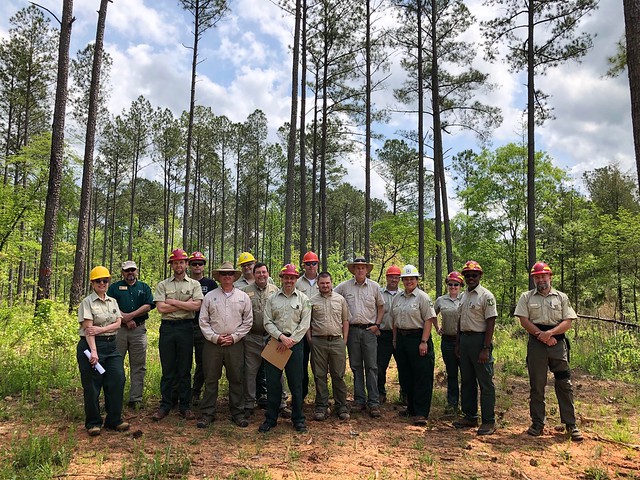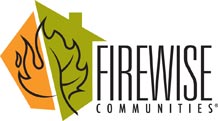Resource Management
The health of our nation depends, in many ways, on the vitality of our nation’s forests and grasslands. These natural resources contribute a variety of essential elements to our well-being, including clean air, water and soil. Climate change, catastrophic wildfire, bark beetle infestation, invasive species, record droughts, and other stressors threaten the health of our forest and watersheds, and the people that rely on them. With our valuable state, tribal, local government, and private partners we are working hard to increase the rate of restoration in the face of these mounting challenges. We use an all-lands approach, because we know that problems do not stop at forest boundaries, and we work every day to restore the ecological integrity our forests need to be healthy now and into the future. Find information below on:
Fish, Wildlife & Plants | Water & Soils | Recreation, Heritage, Wilderness, Engineering, & Lands | Fire Management | Vegetation & Forest Management | Shared Stewardship
Highlights
- Foothills Landscape Project
- Wildernesses of the Chattahoochee-Oconee National Forests
- Vegetation & Forest Management
- Cooper Creek Watershed Project
- Fires, Bark Beetles, and Healthy Forests Poster
- Wildlife Management Program
- Southern Regional Extension Forestry
- Chattahoochee-Oconee National Forest Land Adjustment Act
- Conservation Partners Save Georgia Aster from Endangered Status
Fish, Wildlife & Plants
Our Nation’s forests and grasslands provide some of the most important habitats for wildlife and fish. They provide countless benefits—ecological, recreational, economic, and cultural—to both nature and society. Existing and emerging threats, such as habitat loss, climate change, and invasive species, affect the ability of our Nation's forests and grasslands to support healthy wildlife and fish populations for future generations.
Plants are also crucial to the maintenance of healthy ecosystems. Native plants provide natural beauty and help fend off invasive plants. Native plants also support wildlife, often serving as a source of food and shelter. Invasive plant species have the potential to permanently change a native plant community by taking over and outcompeting native plants.
From improving air quality to enhancing streams and uplands for drinking water and wildlife, our programs cover a wide variety of topics and span the forest landscape. Working with partners across the State, we provide technical expertise, support, and coordination in the stewardship of water, fish, wildlife, air, and rare plants within the watersheds of the national forest. Learn more below about work on the Chattahoochee-Oconee National Forests , or visit the nationwide website for Watershed, Fish, Wildlife, Air, and Rare Plants.
Wildlife Management Program
Our work includes restoring aquatic organism passage, stream habitat, and floodplains; enhancing lake productivity; restoring habitat for a vast array of wildlife species from red-cockaded woodpeckers to bobcats and frogs to black bears and connecting people to the outdoors. Our goal is to enhance, restore, manage and create habitats as required for wildlife and plant communities, including disturbance-dependent forest types. Read about the return of rare Golden Eagles to Georgia. Learn about the Threat of Non-native Invasive Species.
- Birds, Their Habitat, and Populations
- Management Indicator Species Population and Habitat Trends
- Early successional habitat
- Hunting and Fishing Regulations
- Terrestrial Wildlife
- WATCH: Living with Black Bears (5.78MB) for Windows Media Player (transcript)
- Non-Native Invasive Species
- Learn more.>>>
Plants & Botanical Resources
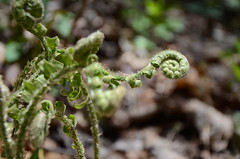 Native plants are valued for their economic, ecological, genetic, and aesthetic benefits. Using native plant material in vegetation projects maintains and restores native plant gene pools, communities, and ecosystems, and can help reverse the trend of species loss in North America. One of our goals is to contribute to the conservation and recovery of federally-listed threatened and endangered species through habitat maintenance and/or enhancement and, where possible, for their reintroduction into suitable habitats, and contribute to avoiding the necessity for federal listing of other species under the Endangered Species Act. There are several Threatened, Endangered, and Candidate Plants on the Chattahoochee-Oconee National Forests, including the Smooth coneflower, Georgia aster, Swamp pink and the White fringeless orchid. Read about work with the Georgia Plant Conservation Allliance.
Native plants are valued for their economic, ecological, genetic, and aesthetic benefits. Using native plant material in vegetation projects maintains and restores native plant gene pools, communities, and ecosystems, and can help reverse the trend of species loss in North America. One of our goals is to contribute to the conservation and recovery of federally-listed threatened and endangered species through habitat maintenance and/or enhancement and, where possible, for their reintroduction into suitable habitats, and contribute to avoiding the necessity for federal listing of other species under the Endangered Species Act. There are several Threatened, Endangered, and Candidate Plants on the Chattahoochee-Oconee National Forests, including the Smooth coneflower, Georgia aster, Swamp pink and the White fringeless orchid. Read about work with the Georgia Plant Conservation Allliance.
- Native Plant Materials
- Pollinators
- Read: Have changing forests conditions contributed to pollinator decline in the southeastern United States?
- Read: Removing an invasive shrub (Chinese privet) increases native bee diversity and abundance in riparian forests of the southeastern United States
- Read: Factors affecting bee communities in forest openings and adjacent mature forest
- Rare Plant Communities
- Mountain Bogs
- Celebrating Wildflowers
Wildflower Viewing Areas for Georgia
Anna Ruby Falls Trail
Lake Russell
Sosebee Cove
Watch Georgia Outdoors To Save a Plant - Season 2023 Episode 2 | 26m 52s |
Fish & Aquatic Resources
Our work includes restoring aquatic organism passage, stream habitat, and floodplains; enhancing lake productivity; and projects designed to protect, sustain, and improve the water, aquatic habitat and watershed resources for fish and other aquatic species. Learn more about why the Conasauga River is a special place for aquatic diversity.
- Stream and lake restoration
- Fish Management In Action!
- Bring Back the Natives
- Fish Facts
- Rise to the Future
- FishWatch (official)
- FishWatch (program description)
- National Fishing and Boating Week
- Recreational Fishing
The U.S. Forest Service - Chattahoochee-Oconee National Forests is pleased to share the news that National Fish and...
Posted by U.S. Forest Service - Chattahoochee-Oconee National Forests on Thursday, December 10, 2020
Water & Soils
A primary mission of the Forest Service is to provide high-quality water in sufficient quantities to meet all needs of natural resource and human requirements. Because several of the river systems within Georgia have headwater sources within the Chattahoochee-Oconee National Forest proclamation boundaries, it is imperative that the Forests emphasize proper management to ensure that good, clean water is provided to meet these needs. The maintenance and enhancement of aquatic habitats are also necessary to maintain healthy populations of fish, mussels, and amphibians. Read more about the Forest Plan goals and objects for watershed management.
Water
Water is one of the most important water resources flowing from national forests and grasslands, providing drinking water to more than 180 million people. Water is an essential physical resource, the lifeblood for human consumption, habitat for water dependent species of plants, animals and other aquatic life. Throughout human history, water has played a central, defining role. It has sculpted the biological and physical landscape through erosion and disturbance. The amount, place, and timing of water are reflected in the vegetative mosaic across the landscape.
Georgia is experiencing increased demands for water supply, along with a desire for it to be clean and free of pollutants. Forests are key to clean water. About 66 percent of the Nation’s scarce freshwater resources originate on forests, which cover about one-third of the Nation’s land area. The forested land absorbs rain, refills underground aquifers, cools and cleanses water, slows storm runoff, reduces flooding, sustains watershed stability and resilience, and provides critical habitat for fish and wildlife. Learn more.>>>
- Watershed Condition Framework helps guide the Forest Service on watershed restoration
- Watershed management tools help us and you make better decisions
- Water, Climate Change and Forests shows how adaption can help moderate the negative effects and exploit the benefits of climate change
- Land and water Conservation Fund provides money to federal, state and local governments to purchase land, water and wetlands.
- The Water Cycle (link is external), an easy-to-understand vide by the Natural Resources Conservation Service
- Water facts
- Watershed restoration
- Climate change
- National Stream & Aquatic Ecology Center
- Watershed management and the Land and Resource Management Plan
#DYK where your water comes from? #YourBestWaters comes from national #forests! Learn how much of your drinking water...
Posted by U.S. Forest Service - Chattahoochee-Oconee National Forests on Tuesday, March 23, 2021
Soils and Geology Management
 Healthy soil absorbs water and makes it available for plants, cycle nutrients and filter pollutants. Soil also controls water flow and stores and cycles nutrients. Soil is the basis of our ecosystem and controls living things above and below the surface. Soils serve as the primary medium for controlling the movement and storage of energy and water. The physical, chemical and biological properties of soils determine productivity, hydrologic response, site stability and ecosystem resiliency. Read about Keener Bog, one of Georgia's Rarest Natural Communities.
Healthy soil absorbs water and makes it available for plants, cycle nutrients and filter pollutants. Soil also controls water flow and stores and cycles nutrients. Soil is the basis of our ecosystem and controls living things above and below the surface. Soils serve as the primary medium for controlling the movement and storage of energy and water. The physical, chemical and biological properties of soils determine productivity, hydrologic response, site stability and ecosystem resiliency. Read about Keener Bog, one of Georgia's Rarest Natural Communities.
- Water, air and soil research
- BAER – repairing damage after a fire
- Watch (link is external) how water moves in soil
- Minerals and Geology Management
Recreation, Heritage, and Wilderness
Providing the greatest diversity of outdoor recreation opportunities in the world means working to balance the desires of recreationists with ensuring future generations have the same access. From the rolling hills of the Piedmont to the mountains of the southern Appalachian mountains, there are hundreds of outdoor activities enjoyed by more than 3 million visitors to the Chattahoochee-Oconee National Forests each year. Managing the trails, roads, camping, and other developed recreation sites is a challenge and large responsibility.
Recreation Management
Recreation is the single greatest use of National Forest System lands and is the Forest Service's greatest single contributor to rural prosperity. Recreational activities support jobs in rural communities and contribute to the national economy. These economic impacts are driven by visitors to the national forest. The benefits to rural communities from visitors to NFS lands continue long after visitors leave the forest. Read about efforts working with partners and users to maintain trails on the Chattahoochee-Oconee National Forests.
- Recreation challenges
- Agency focus
- Access for all
- National Forest System Trails
- Every Kid in a Park
- Fall Colors
- NextGen Forest Ambassadors Stewardship Projects
Heritage & Tribal Program
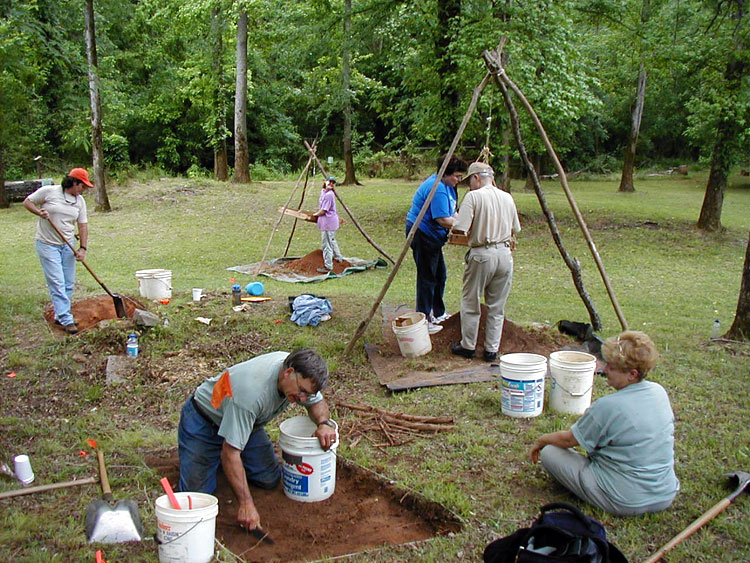 The purpose of the Heritage and Tribal Program is to protect significant heritage resources, to share their values with the American people, and to contribute relevant information and perspectives to natural resource management. In so doing we will:
The purpose of the Heritage and Tribal Program is to protect significant heritage resources, to share their values with the American people, and to contribute relevant information and perspectives to natural resource management. In so doing we will:
- Ensure that future generations will have an opportunity to discover the human story etched on the landscapes of our national forests and grasslands;
- Make the past come alive as a vibrant part of our recreational experiences and community life; and
- Connect people to the land in a way that will help us better understand and manage forest ecosystems.
- Read about American Indian Partners Work to Protect Track Rock Gap
- Learn about the history of the Chattahoochee-Oconee National Forests.
- Learn more.>>>
Wilderness and Wild & Scenic Rivers
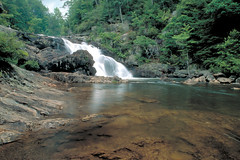 Congress has designated several areas unique for their special characteristics and the opportunities they offer. Designation as a wild and scenic river is our nation’s strongest form of protection for free-flowing rivers and streams. They have remarkable scenic, recreational, geologic, fish and wildlife, historic or other similar values that led Congress to add these waterways to the National Wild and Scenic Rivers System. In addition to congressionally designated Wilderness, they include these National Historic Landmarks (NHL), National Volcanic Monuments (NVM), National Historic Scenic Areas (NHS), National Recreation Areas (NRA), Scenic Recreation Areas (SRA), National Scenic Areas (NSA), National Preserves (NP), and National Monuments (NM).
Congress has designated several areas unique for their special characteristics and the opportunities they offer. Designation as a wild and scenic river is our nation’s strongest form of protection for free-flowing rivers and streams. They have remarkable scenic, recreational, geologic, fish and wildlife, historic or other similar values that led Congress to add these waterways to the National Wild and Scenic Rivers System. In addition to congressionally designated Wilderness, they include these National Historic Landmarks (NHL), National Volcanic Monuments (NVM), National Historic Scenic Areas (NHS), National Recreation Areas (NRA), Scenic Recreation Areas (SRA), National Scenic Areas (NSA), National Preserves (NP), and National Monuments (NM).
Georgia’s vast wilderness, which includes 14 Wilderness Areas covering more than 486,000 acres. In 1974, Congress designated the Chattooga River a wild and scenic river becuase of its outstanding scenery, recreation, wildlife, geologic, and cultural values. While not the same as wilderness, wild and scenic rivers are carefully managed to protect them. Managing the Wilderness to protect the resource and the visitors who enjoy them can be a challenge, from human impacts to wildlife conflicts. Learn more.>>>
Engineering
 Sustainable roads, trails and facilities are essential for the management, protection, public use and enjoyment of 193 million acres of National Forest System (NFS) lands, as well for meeting the Forest Service’s goal of managing the healthy forests and watersheds. This infrastructure is maintained by engineers to provide public access to national forests, as well as agency access for natural resources and fire management. Challenges includes accessibility and sustainability of this infrastructure. A 2016 Travel Analysis Report analyzes the existing National Forest road system and identifies opportunities to achieve a more ecologically and economically sustainable road system on the Chattahoochee-Oconee National Forest.
Sustainable roads, trails and facilities are essential for the management, protection, public use and enjoyment of 193 million acres of National Forest System (NFS) lands, as well for meeting the Forest Service’s goal of managing the healthy forests and watersheds. This infrastructure is maintained by engineers to provide public access to national forests, as well as agency access for natural resources and fire management. Challenges includes accessibility and sustainability of this infrastructure. A 2016 Travel Analysis Report analyzes the existing National Forest road system and identifies opportunities to achieve a more ecologically and economically sustainable road system on the Chattahoochee-Oconee National Forest.
Managing a national forest like the Chattahoochee-Oconee National Forest requires the efforts of not only dedicated employees, but many partners and volunteers who contribute to the successful management of forest resources as well as providing services to forest visitors like you. Learn more.>>>
Lands
 Protection of the public’s interests in National Forest System lands is essential to the land stewardship and public trust responsibilities of the Forest Service. Loss of open space and forests is an increasing challenge. The Land and water Conservation Fund provides money to federal, state and local governments to purchase land, water and wetlands. The Forest Service Land Acquisition program activities include land exchanges, purchasing lands, accepting land donations, and selling land in limited situations. These activities are all characterized as land adjustments. Overall, the Forest Service strives to achieve a footprint where the agency can effectively maintain and improve land management, public and emergency access, environmental conservation, and the sustainability of the national forests and grasslands. Special Uses provides services supporting our national policy and federal land laws by authorizing uses on National Forest System (NFS) land. Learn more.>>>
Protection of the public’s interests in National Forest System lands is essential to the land stewardship and public trust responsibilities of the Forest Service. Loss of open space and forests is an increasing challenge. The Land and water Conservation Fund provides money to federal, state and local governments to purchase land, water and wetlands. The Forest Service Land Acquisition program activities include land exchanges, purchasing lands, accepting land donations, and selling land in limited situations. These activities are all characterized as land adjustments. Overall, the Forest Service strives to achieve a footprint where the agency can effectively maintain and improve land management, public and emergency access, environmental conservation, and the sustainability of the national forests and grasslands. Special Uses provides services supporting our national policy and federal land laws by authorizing uses on National Forest System (NFS) land. Learn more.>>>
The Federal government originally acquired the lands within the boundaries of the Chattahoochee National Forest under the authority of the 1911 Weeks Act. The Weeks Act authorized the Secretary of Agriculture to purchase lands within the watersheds of navigable streams to restore the watersheds and their normal stream flows, and to provide a supply of timber. These purchases began on the Forest in the 1920s. The lands of the Oconee National Forest were purchased to restore abandoned, eroding agriculture lands to a protected watershed condition. Conservation measures were installed to stop the loss of valuable topsoil, and stabilize sediment choked stream channels. Learn more.>>>
- Read about Brasstown Bald, Georgia's Highest Mountain
- LIVE view from Brasstown Bald WebCam
- Maps & Publications
- National Forest System Land Ownership
- Chattahoochee-Oconee National Forests Land Adjustment Act
Fire Management
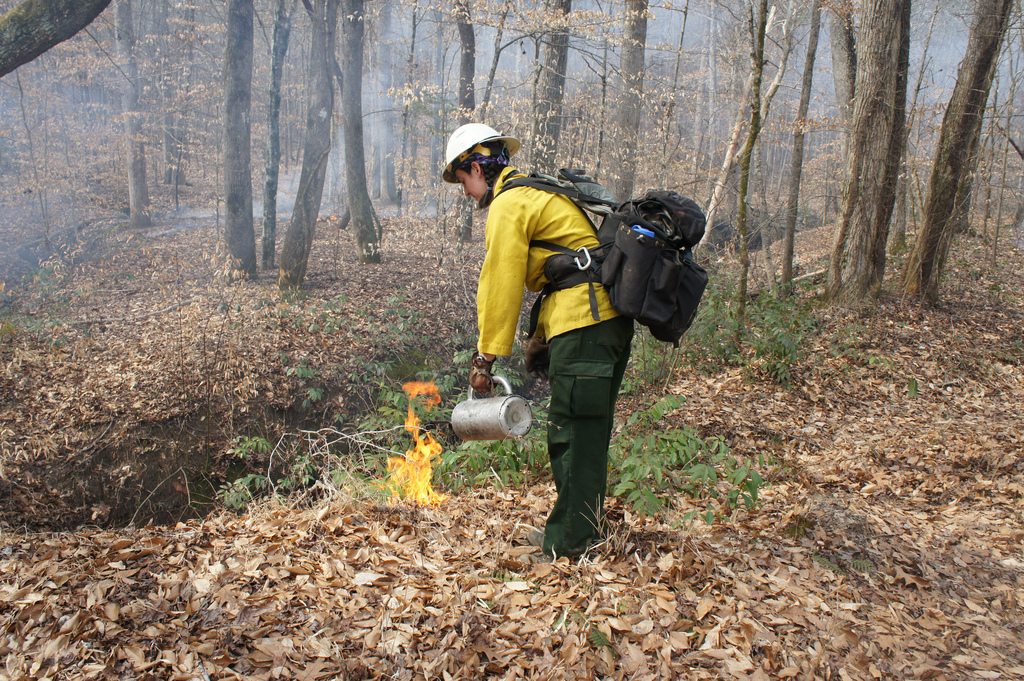 Fire Management involves both fire suppression and proactively using fire to achieve set goals. Fire effectively and efficiently reduces the level of hazardous fuels thus reducing risks and costs.
Fire Management involves both fire suppression and proactively using fire to achieve set goals. Fire effectively and efficiently reduces the level of hazardous fuels thus reducing risks and costs.
After many years of fire exclusion, an ecosystem that needs periodic fire becomes unhealthy. Trees are stressed by overcrowding; fire-dependent species disappear; and flammable fuels build up and become hazardous. However, the right fire at the right place at the right time helps maintain healthy forests, communities and watersheds. Learn more. >>>
Prescribed Fire
 Fire has been an essential natural process in Southern Appalachian oak and pine forests for thousands of years, and its absence over the past century has transformed our forests.
Fire has been an essential natural process in Southern Appalachian oak and pine forests for thousands of years, and its absence over the past century has transformed our forests.  When conditions are just right, fire managers begin the prescribed fire treatments essential to improving wildlife habitat and maintaining a healthy forest. Every year, fire managers successfully treat around 35,000 acres on the Chattahoochee-Oconee National Forests through prescribed fire. Learn more about prescribed fire.
When conditions are just right, fire managers begin the prescribed fire treatments essential to improving wildlife habitat and maintaining a healthy forest. Every year, fire managers successfully treat around 35,000 acres on the Chattahoochee-Oconee National Forests through prescribed fire. Learn more about prescribed fire.
Wildfire
 Humans cause nearly nine out of ten wildfires. When you visit the forest, fire prevention is YOUR responsibility. Forest visitors are also reminded to ensure that all fires are extinguished and cold to the touch before leaving them. Learn more about campfire safety from Smokey Bear. Learn more.>>>
Humans cause nearly nine out of ten wildfires. When you visit the forest, fire prevention is YOUR responsibility. Forest visitors are also reminded to ensure that all fires are extinguished and cold to the touch before leaving them. Learn more about campfire safety from Smokey Bear. Learn more.>>>
Vegetation & Forest Management
 The overriding objective of the Forest Service's forest management program is to ensure that the National Forests are managed in an ecologically sustainable manner. Forest management objectives include ecological restoration and protection, research and product development, fire hazard reduction, and the maintenance of healthy forests.
The overriding objective of the Forest Service's forest management program is to ensure that the National Forests are managed in an ecologically sustainable manner. Forest management objectives include ecological restoration and protection, research and product development, fire hazard reduction, and the maintenance of healthy forests.
Thinning, through commercial and non-commercial timber sales, can help to maintain healthy forests and watersheds in an ecologically sustainable manner.
Guided by law, regulation, and agency policy, forest managers use timber sales, as well as other vegetation management techniques such as prescibed fire, to achieve objectives such as ecological restoration and research.
- Restoring Healthy Forests
- Forest Health Protection
- Conserving Southern Yellow Pine
- Forest Service Research
- Forest Plan Goals and Objectives
- Timber Sales
Feature Stories
-
Wildlife Habitat Improvement Project Yields Tangible Results
-
The Oconee Forest Health & Wildlife Habitat Improvement Project
Timber Sales
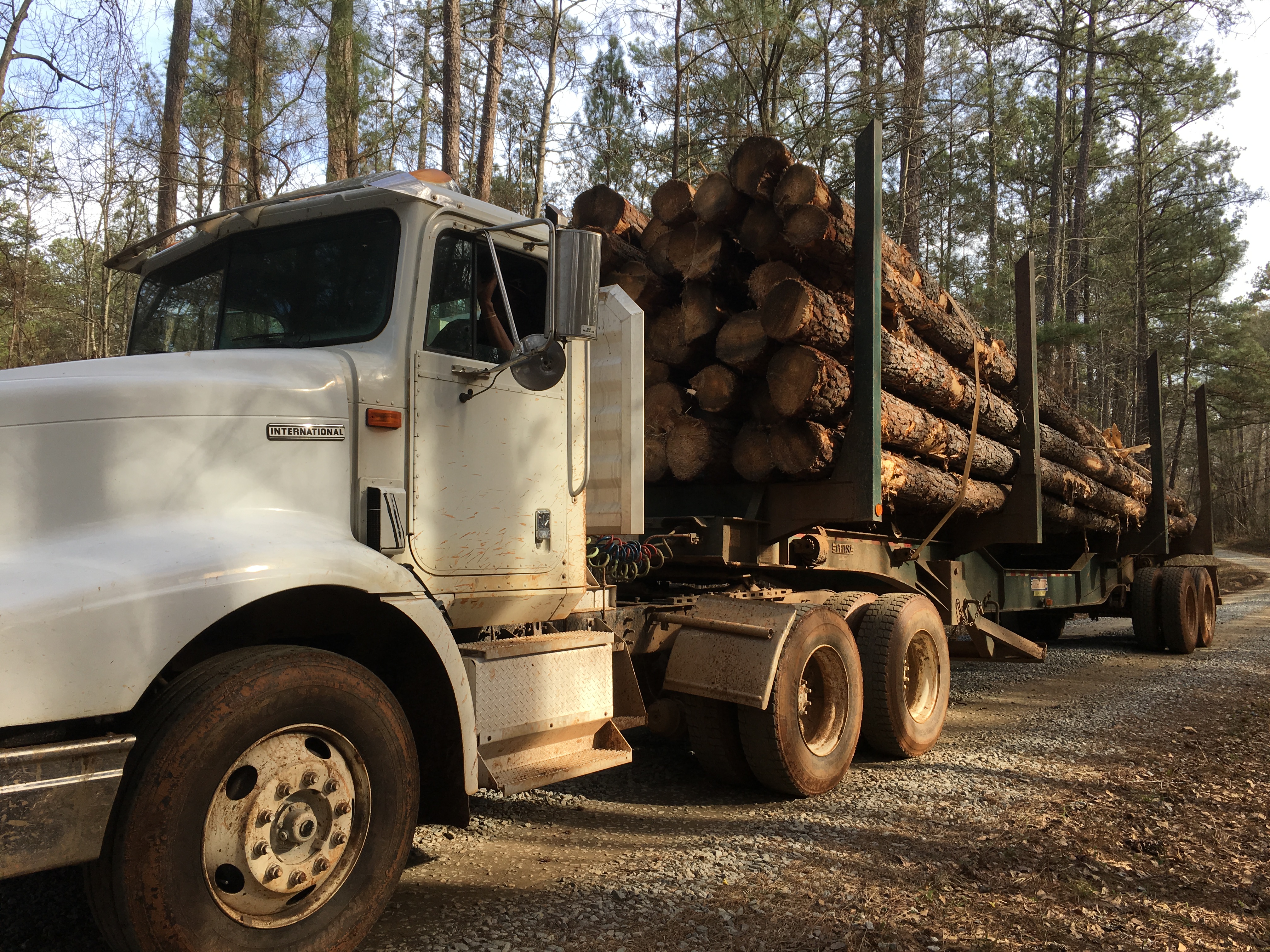 The National Forests were originally envisioned as working forests with multiple objectives: to improve and protect the forest, to secure favorable watershed conditions, and to furnish a continuous supply of timber for the use of citizens of the United States. Forest management objectives have evolved and are broadly captured in the USDA Forest Service Strategic Plan FY 2015-2020 goals to sustain our Nation’s Forests and Grasslands and deliver benefits to the public. More specifically, timber sales and other removals of forest products support agency strategic objectives to foster resilient, adaptive ecosystems to mitigate climate change, mitigate wildfire risk, and strengthen communities.
The National Forests were originally envisioned as working forests with multiple objectives: to improve and protect the forest, to secure favorable watershed conditions, and to furnish a continuous supply of timber for the use of citizens of the United States. Forest management objectives have evolved and are broadly captured in the USDA Forest Service Strategic Plan FY 2015-2020 goals to sustain our Nation’s Forests and Grasslands and deliver benefits to the public. More specifically, timber sales and other removals of forest products support agency strategic objectives to foster resilient, adaptive ecosystems to mitigate climate change, mitigate wildfire risk, and strengthen communities.
Forest products include materials derived from a forest for commercial and personal use such as lumber, paper, and firewood as well as “special forest products” such as medicinal herbs, fungi, edible fruits and nuts, and other natural products.
The U.S. Forest Service Timber Sale Preparation Process (The Gate System) A Short Overview is a short narrated video presentation that introduces employees and partners to the Timber Sale gate process as outlined in Forest Service manual 2430 and Forest Service handbook 2409.18.
Timber Sale, Stewardship, and Forest Products Contracts and Permits
The Forest Service sells timber and special forest products on a variety of contract and permit forms based on the complexity and/or value of the sale. Guidance for the use of these forms can be found in Forest Service Handbook (FSH) 2409.18, Chapter 50, Sections 53 and 54.
For active timber sales, visit: http://www.fs.usda.gov/goto/timbersales
For current advertised timber sales, scroll to the bottom of this page.
Shared Stewardship
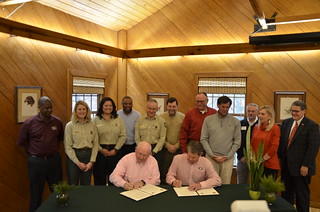 The USDA Forest Service and the State of Georgia have agreed to work together in shared stewardship of the Chattahoochee-Oconee National Forests. Learn more about this agreement:
The USDA Forest Service and the State of Georgia have agreed to work together in shared stewardship of the Chattahoochee-Oconee National Forests. Learn more about this agreement:
11/23/19 – Georgia News Release: USDA and Georgia sign Shared Stewardship Agreement highlighting cooperative approach to land management
Staff for the Chattahoochee-Oconee National Forests, the Georgia Department of Natural Resources and the Georgia Forestry Commission met on the Oconee Ranger District to review and discuss shared stewardship of national forest system lands as part of a Good Neighbor Agreement between the agencies.
Features
Responding to Forest Health Threats
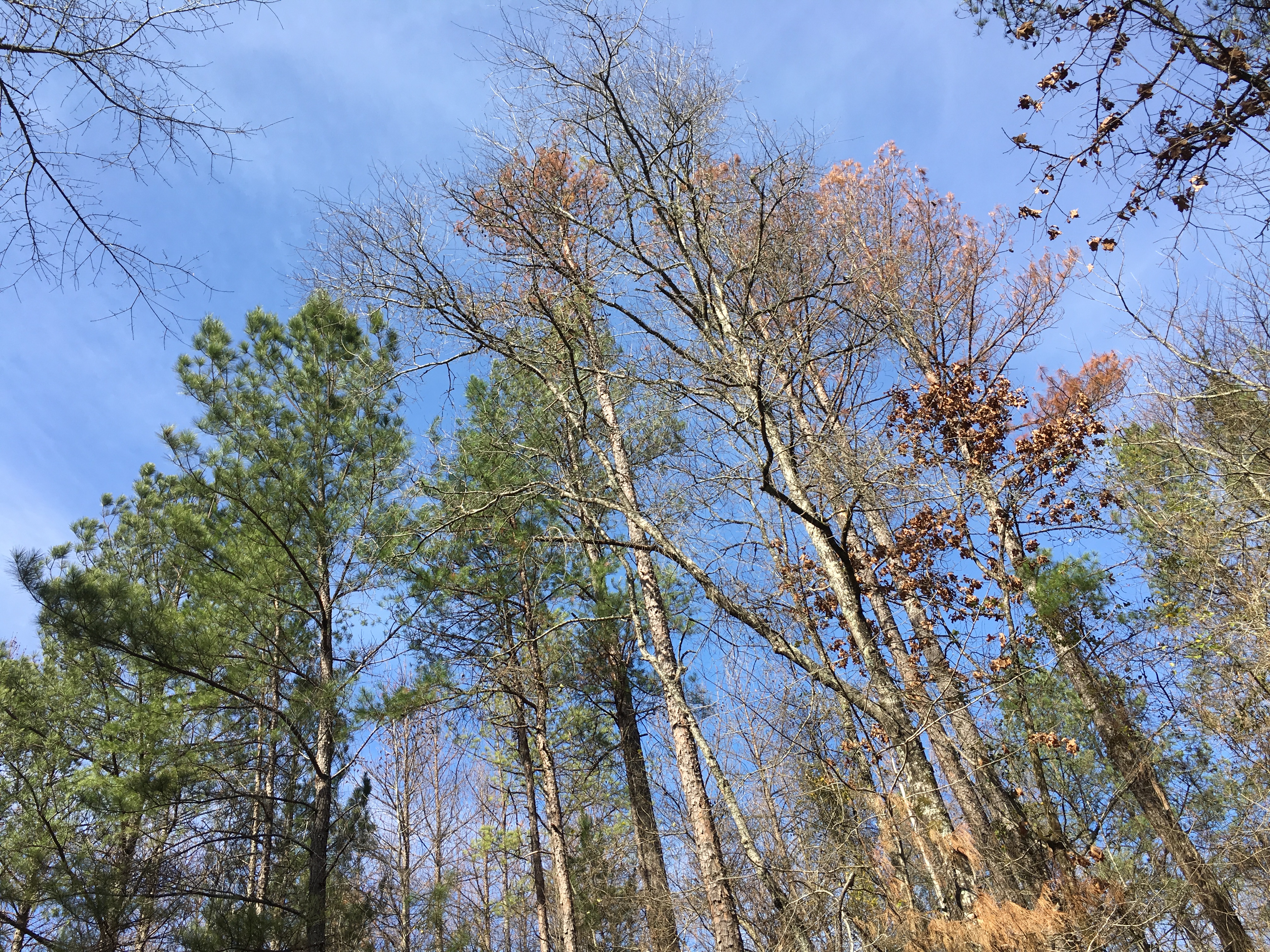
Chattahoochee-Oconee National Forest staff work to protect the health of the national forest.
Wildlife Habitat Improvement Project Yields Tangible Results
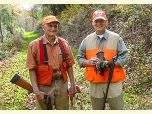
Investing in wildlife habitat improvement not only benefits the wildlife, it also improves our quality of life and can stimulate the local outdoor sporting industry. Win, win, win.
Spotlights
Prescribed Fire & #BurnAlerts
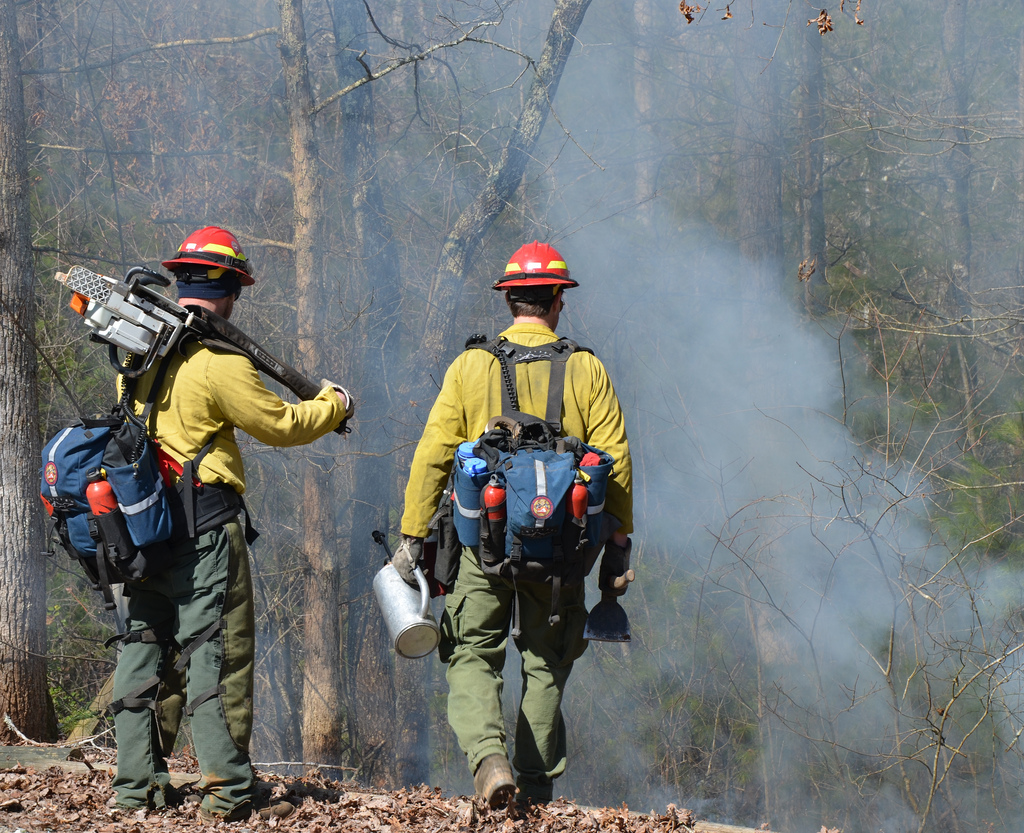
When conditions are just right, fire managers begin the prescribed fire treatments essential to improving wildlife habitat and maintaining a healthy forest.
Vegetation & Forest Management

National Forests are managed to improve and protect the forest, watersheds, and timber supplies. Goals include restoration, research, fire, and forest health.
Hunting and Fishing Information Chattahoochee-Oconee National Forests

Find information about hunting and fishing on the Chattahoochee-Oconee National Forests.
Birds, Their Habitat, and Populations
![[Photo] A male Cerulean Warbler perched on a branch](/Internet/FSE_MEDIA/fsm9_028259_tn.jpg)
Annual bird counts allows the Southern National Forests to access and track the status of forest breeding bird populations and their habitats over time.
Timber Sales
| Currently Advertised | Remarks |
|---|---|
Skull Salvage Timber Sale |
The Skull Salvage Sale is located approximately 1 mile east of the Scull Shoals Historic Site off Forest Service Road 1234A in Greene County, GA. The Forest Service will receive Sealed bids at Oconee Ranger District Office, Eatonton, GA before or at the time of public bid opening at 11:00 AM local time on 06/24/2024 for an estimated volume of 823 CCF of Southern Yellow Pine Salvage sawtimber, 66 CCF of Hardwoods pulpwood, and 1101 CCF of Softwood. |
Mooneyham Timber Sale |
The Mooneyham Timber Sale is located 15 miles North/Northeast of Chatsworth, GA, off US Highway 411 on Forest Service Road 151 in Murray County. The Forest Service will receive Sealed bids at the Conasauga Ranger District before or at the time of public bid opening at 11:00 AM local time on 06/21/2024 for an estimated volume of 68 CCF of Hardwoods sawtimber, 439 CCF of Southern Yellow Pine sawtimber, 747 CCF of Virginia Pine sawtimber, 16 CCF of Eastern W. Pine sawtimber, 483 CCF of Hardwoods pulpwood, and 2810 CCF of Softwood - Other pulpwood. |
Burnette Re-Offer 2 |
The Burnette Re-Offer 2 Sale is located 15 miles SW of Blairsville, GA in the Cooper Creek WMA along Burnette Creek Road. The Forest Service will receive Sealed bids at Blue Ridge Ranger District, 2042 Highway 515 West, Blairsville, GA 30512 before or at the time of public bid opening at 11:00 AM local time on 06/21/2024 for an estimated volume of 8 CCF of Hardwoods sawtimber, and 940 CCF of Eastern W. Pine sawtimber marked or otherwise designated for cutting. |
Alerts & Warnings
- Tallulah River Road Construction to Begin
- Before riding your UTV, Educate Yourself!
- Tumbling Creek Road (FSR 22) Reopened
- Houston Valley Now Scan & Pay
- Track Rock Petroglyphs
- Flatlands Road (FSR 256 and FSR 637) Closed
- Road Closures on the Chattooga River Ranger District
- Coleman River Rd (FSR #54) Closure
- CAUTION Waterfall Dangers
- CALL BEFORE YOU HAUL - ATV and OHV
- Panther Creek Trail Temporary Hiker Restrictions
- Don't Move Firewood!







